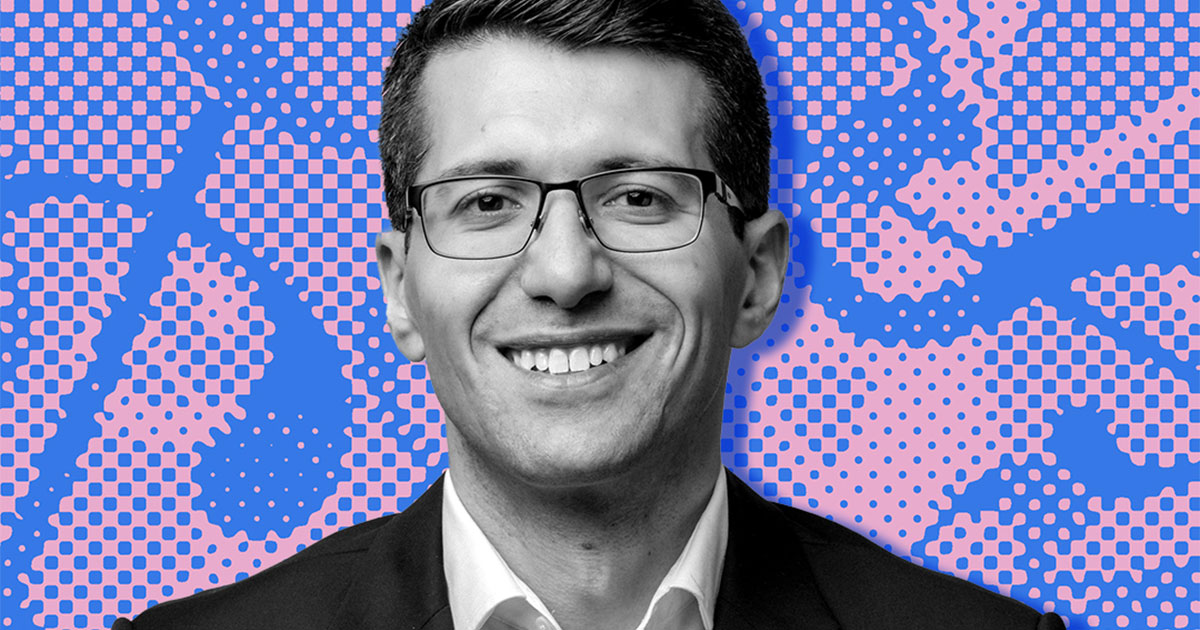Investment
Software is eating renewable energy markets: cleantech investment roundup – pv magazine USA

Here are five companies that have raised more than $50 million in funding in recent days — with an emphasis on solving renewable energy problems with software.
September 13, 2020
Utility solar software gets $6 million
Terabase Energy is on a mission to drive down utility-scale solar power prices to below $0.01 per kWh by 2025. Using its software, automation and “digital-twin” modeling, the new company aims to modernize solar power-plant optimization.
The startup just closed a $6 million Series A round to further develop its platform — led by SJF Ventures along with follow-on investments from Powerhouse Ventures, CityLight Capital and Trancoso Partners.
Matt Campbell, the company CEO, told pv magazine that while solar hardware has gotten cheaper — soft costs have been stubborn and a more significant piece of the total project cost (a similar situation to the residential and commercial solar segments.)
The startup is cofounded by SunPower alums: CEO Matt Campbell, Chris Baker, Amine Berrada, Dan Cohen, Pierre Gousseland and Thang Le. When SunPower exited the utility-scale business in 2019, the startup effectively spun out the core utility-scale team and acquired some relevant intellectual property from the solar pioneer.
Terabase is no stranger to world-record low, utility-scale solar pricing — the startup recently provided digital and engineering services for the 800-MW Siraj-1 solar power plant in Qatar which will sell power for $0.01449/kWh.
$5.1 million for solar analysis and O&M software
SenseHawk, a SaaS platform that helps customers develop, build and operate solar and other infrastructure sites, raised $5.1 million in Series A1 funding led by Alpha Wave Incubation, a venture fund managed by Falcon Edge Capital and backed by ADQ, a large regional holding firm in Abu Dhabi — along with existing investor SAIF Partners.
SenseHawk’s cloud-based platform and software enable solar companies to reduce costs, enhance workforce productivity and improve solar site performance using AI and machine learning models.
The platform is used by over 80 customers to analyze over 28 GW of solar assets in 15 countries. Global installed solar capacity is expected to increase from the current installed base of 600GW to 3,000 GW worldwide in 2030.
Applications on the platform support site and terrain management, construction monitoring, operations, thermography and work management.
$6 million for time series forecasting in electricity
Myst AI, an artificial intelligence platform for time series forecasting in electricity, closed on a $6 million Series A round led by Valo Ventures along with Gradient Ventures. The funding will be used to expand the company’s forecasting-as-a-service product.
For the team at Myst, the goal has always been to mitigate the effects of climate change and find the most effective way to get a high volume of renewables not only on the grid, but generating and contributing to the grid in the most effective way possible. “We really strongly believe that many of the biggest problems that we’re facing today as humanity can be solved, in part, by better forecasting,” Myst co-founder and CEO, Pieter Verhoeven, told pv magazine.
“The reason why we chose to focus on electricity initially is because this is a place where accurate near-term forecasting is a critical component of the transition that we’re now in and will be in for the next ten or more years,” Myst co-founder Titiaan Palazzi said.
$30 million for smart streetlights
Ubicquia, a provider of smart city, small cell and smart grid solutions closed a $30 million Series C funding round from Fuel Venture Capital and ClearSky. Ubicquia’s platforms plug into existing streetlights to provide light control and video AI to optimize traffic management and improve public safety.
Ubicquia’s communication platforms deliver public WiFi, private LTE and small cells that plug into a streetlight photocell socket. The startup’s smart grid platforms can help utilities harden their utility pole and distribution transformer networks while delivering real-time data for monitoring critical infrastructure. Ubicquia is deployed in more than 100 cities.
Earlier this year, Ubicquia acquired smart city platform CityIQ from GE Current, adding more than 8,000 cameras deployed across the U.S. and Canada to enhance traffic optimization and public safety to its fleet.
Space-eye view of wildfire risk gets $1.7 million seed funding
Overstory (the former 20tree.ai) raised a $1.7 million seed round led by climate fund Pale Blue Dot and joined by Powerhouse Ventures, Techstars and Futuristic VC. The startup’s vegetation intelligence platform uses machine learning to interpret satellite imagery and climate data. The platform helps electric utilities reduce the risks of wildfires and power outages.
Emily Kirsch of Powerhouse writes: “Utilities can spend hundreds of millions of dollars per year on trucks, helicopters and drones to inspect their grids for vegetation that can spark fires and dispatching crews to clear dangers like dying trees, overhanging limbs and tinder-dry brush. But it’s impossible for utilities to track the vegetation changes that occur between inspections; it can take years to cycle through thousands of miles of power lines”
“Overstory got its start combining satellite images of forests with correlating data to gain insight that photographs taken from space can’t reveal. If a utility can take a relatively minor and inexpensive action to prevent tens of billions of dollars of losses, which is what the Nov. 2018 Camp Fire cost PG&E, that is enough incentive for a utility to act.”
Investment
Deutsche Bank's Investment Bankers Step Up as Rate Boost Fades – Yahoo Canada Finance
(Bloomberg) — Deutsche Bank AG relied on its traders and investment bankers to make up for a slowdown in income from lending, as Chief Executive Officer Christian Sewing seeks to deliver on an ambitious revenue goal.
Most Read from Bloomberg
Fixed income trading rose 7% in the first quarter, more than analysts had expected and better than most of the biggest US investment banks. Income from advising on deals and stock and bond sales jumped 54%.
ADVERTISEMENT
Revenue for the group rose about 1% as the prospect of falling interest rates hurt the corporate bank and the private bank that houses the retail business.
Sewing has vowed to improve profitability and lift revenue to €30 billion this year, a goal some analysts view with skepticism as the end of the rapid rate increases weighs on revenue from lending. In the role for six years, the CEO is cutting thousands of jobs in the back office to curb costs while building out the advisory business with last year’s purchase of Numis Corp. to boost fee income.
“We are very pleased” with the investment bank, Chief Financial Officer James von Moltke said in an interview with Bloomberg TV. The trends of the first quarter “have continued into April,” he said, including “a slower macro environment” that’s being offset by “momentum in credit” and emerging markets.
While traders and investment bankers did well, revenue at the corporate bank declined 5% on lower net interest income. Private bank revenue fell about 2%. Both units benefited when central banks raised interest rates over the past two years, allowing them to charge more for loans while still paying relatively little for deposits.
With inflation slowing and interest rates set to fall again, that effect is reversing, though markets have scaled back expectations for how quickly and how deep central banks are likely to cut. That’s lifted shares of Europe’s lenders recently, with Deutsche Bank gaining 25% this year.
“Deutsche Bank reported a reasonable set of results,” analysts Thomas Hallett and Andrew Stimpson at KBW wrote in a note. “The investment bank performed well while the corporate bank and asset management underperformed.”
–With assistance from Macarena Muñoz and Oliver Crook.
(Updates with CFO comments in fifth paragraph.)
Most Read from Bloomberg Businessweek
©2024 Bloomberg L.P.
Investment
How Can I Invest in Eco-friendly Companies? – CB – CanadianBusiness.com


Welcome to CB’s personal-finance advice column, Make It Make Sense, where each month experts answer reader questions on complex investment and personal-finance topics and break them down in terms we can all understand. This month, Damir Alnsour, a lead advisor and portfolio manager at money-management platform Wealthsimple, tackles eco-friendly investments. Have a question about your finances? Send it to [email protected].
Q: It’s Earth Month! And… there’s a climate crisis. How can I invest in companies and portfolios funding causes I believe in?
Earth Day may have been introduced in 1970, but today it’s more relevant than ever: In a 2023 survey, 72 per cent of Canadians said they were worried about climate change. Along with carpooling, ditching single-use plastics and composting, you can celebrate Earth Month this year by greening your investment portfolio.
Green investing, or buying shares in projects, companies, or funds that are committed to environmental sustainability, is an excellent way to support projects and businesses that reflect your passions and lifestyle choices. It’s growing in favour among Canadian investors, but there are some considerations investors should be mindful of. Let’s review some green investing options and what to look out for.
Green Bonds
Green bonds are a fixed-income instrument where the proceeds are put toward climate-related purposes. In 2022, the Canadian government launched its first Green Bond Framework, which saw strong demand from domestic and global investors. This resulted in a record $11 billion green bonds being sold. One warning: Because it’s a smaller market, green bonds tend to be less liquid than many other investments.
It’s also important to note that a “green” designation can mean a lot of different things. And they’re not always all that environmentally-guided. Some companies use broad, vague terms to explain how the funds will be used, and they end up using the money they raised with the bond sale to pay for other corporate needs that aren’t necessarily eco-friendly. There’s also the practice of “greenwashing,” labelling investments as “green” for marketing campaigns without actually doing the hard work required to improve their environmental footprint.
To make things more challenging, funds and asset managers themselves can partake in greenwashing. Many funds that purport to be socially responsible still hold oil and gas stocks, just fewer of them than other funds. Or they own shares of the “least problematic” of the oil and gas companies, thereby touting emission reductions without clearly disclosing the extent of those improvements. As with any type of investing, it’s important to do your research and understand exactly what you’re investing in.
Socially Responsible Investing (SRI) and Impact Investing
SRI and impact investing portfolios hold a mix of stocks and bonds that are intended to put your money towards projects and companies that work to advance progressive social outcomes or address a social issue—i.e., investing in companies that don’t wreak havoc on society. They can include companies promoting sustainable growth, diverse workforces and equitable hiring practices.
The main difference between the two approaches is that SRI uses a measurable criteria to qualify or disqualify companies as socially responsible, while impact investing typically aims to help an enterprise produce some social or environmental benefit.
Related: Climate Change Is Influencing How Young People Invest Their Money
Some financial institutions use the two approaches to build well-diversified, low-cost, socially responsible portfolios that align with most clients’ environmental and societal preferences. That said, not all portfolios are constructed with the same care. As with evaluating green bonds, it’s important to remember that a company or fund having an SRI designation or saying it partakes in impact investing is subjective. There’s always a risk of not knowing exactly where and with whom the money is being invested.
All three of these options are good reminders that, even though you may feel helpless to enact environmental or social change in the face of larger systemic issues, your choices can still support the well-being of society and the planet. So, if you have extra funds this April (maybe from your tax return?), green or social investing are solid options. As long as you do thorough research and understand some of the limitations, you’re sure to find investments that are both good for the world and your finances.
Investment
MOF: Govt to establish high-level facilitation platform to oversee potential, approved strategic investments


|
|
KUALA LUMPUR: A meeting with 70 financial fund investors and corporate members at the recently concluded Joint Investors Meeting in London has touched on the MADANI government’s immediate action to stimulate strategic investment in important technologies, according to the Ministry of Finance (MoF).
In a statement today, it said that the government is serious about making investments a national agenda through the establishment of a high-level investment facilitation platform to ensure the implementation of potential and approved strategic investments through a “Whole of Government” approach.
Minister of Finance II Datuk Seri Amir Hamzah Azizan (pix), who led the Malaysian delegation to the Joint Investors Meeting from April 20 to 22, said that the National Investment Council (MPN) chaired by the Prime Minister is an integrated action that reflects how serious the government is in making Malaysia an investment hub in the region.
Among the immediate actions taken by the government is establishing the National Semiconductor Strategic Committee (NSSTF) to facilitate cooperation between the government, industry players, universities, and relevant stakeholders to place the Malaysian semiconductor industry at the forefront and ensure the continued growth of the electronics & electrical industry, especially the semiconductor sector, as a major contributor to the Malaysian economy.
The government also aims to empower Malaysia as a preferred green investment destination as well as remove barriers and bureaucracy in the provision and accessibility to renewable energy, especially for the new technology industry, including data centres, said Amir Hamzah.
He also said that the country’s investment prospects have reached an extraordinary level, with approved investments surging to RM329.5 billion in 2023 from RM268 billion in 2022.
He said about 74 per cent of manufacturing projects approved between 2021 and 2023 have been completed or are in process.
In addition, Amir Hamzah said the greater initial stage construction work completed in 2023 (RM31.5 billion) and 2022 (RM26.3 billion) shows a positive trend for future investment opportunities.
“From a total of 5,101 investment projects approved in 2023, as many as 81.2 per cent or 4,143 projects are in the services sector, 883 projects in the manufacturing sector, and 75 projects in other related sectors,” he said.
Before this, Amir Hamzah met with international investors in New York and Washington to clarify the direction of the implementation of the MADANI Economic framework to improve investors’ confidence in Malaysia’s economic level and strengthen the perception and investment sentiment of foreign investors towards the country.





-
Art23 hours ago
The unmissable events taking place during London’s Digital Art Week
-



 Politics18 hours ago
Politics18 hours agoOpinion: Fear the politicization of pensions, no matter the politician
-
Economy23 hours ago
German Business Outlook Hits One-Year High as Economy Heals
-



 Science17 hours ago
Science17 hours agoNASA Celebrates As 1977’s Voyager 1 Phones Home At Last
-
Media16 hours ago
B.C. puts online harms bill on hold after agreement with social media companies
-
Business16 hours ago
Oil Firms Doubtful Trans Mountain Pipeline Will Start Full Service by May 1st
-



 Politics17 hours ago
Politics17 hours agoPecker’s Trump Trial Testimony Is a Lesson in Power Politics
-
Media15 hours ago
Trump poised to clinch US$1.3-billion social media company stock award



